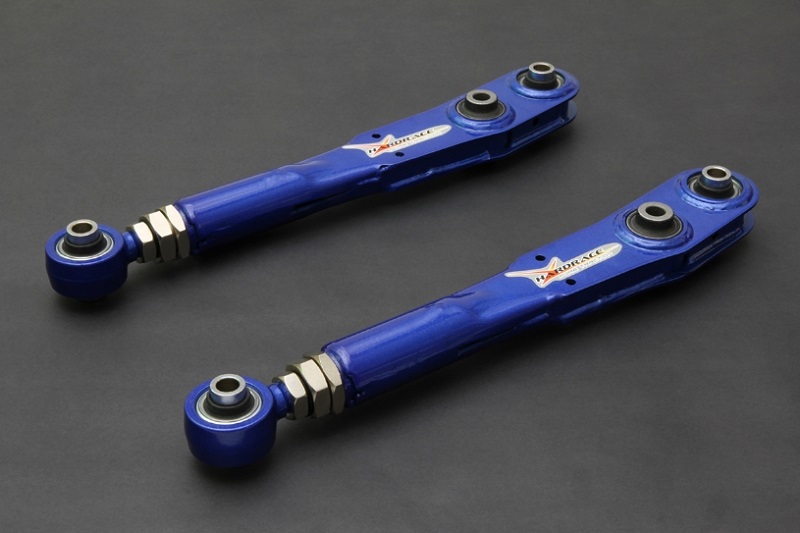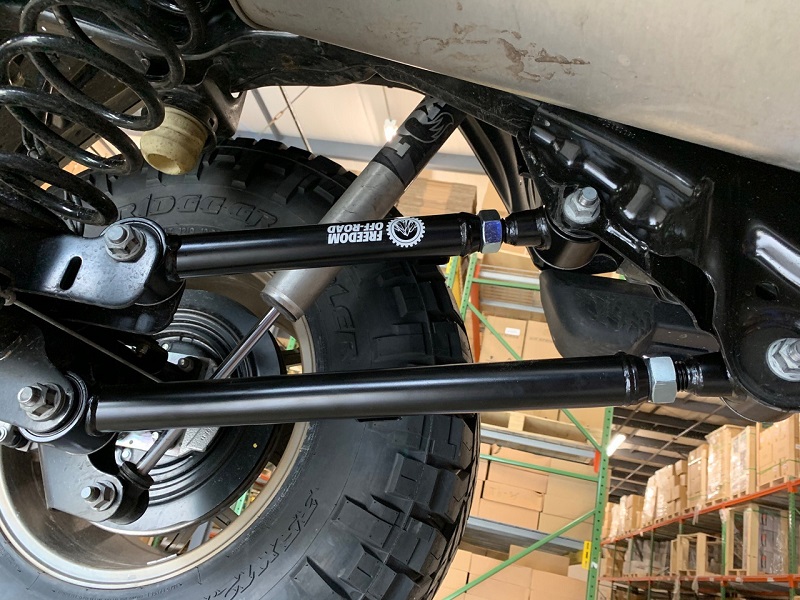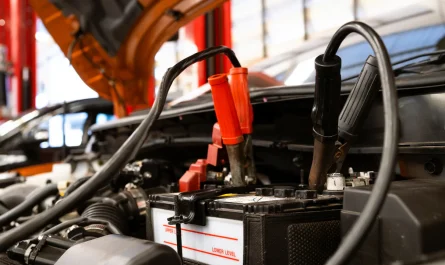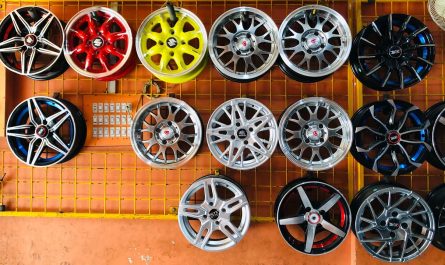The Rear Control Arm plays an essential role in a vehicle’s suspension system. It offers a solid handling and smooth ride while guaranteeing that the back wheels remain aligned. It’s important to comprehend the rear control arm for both safety and performance, regardless of whether you’re an automotive enthusiast or just want to know how it affects your car. This article will go into great detail on what rear control arms are, how they work, the several kinds that are available, wear indicators, and maintenance advice to maintain them in top shape.
Read more: JCB 3DX: Features, Benefits, Applications and Price in India
What is a Rear Control Arm?
The suspension part that joins the vehicle’s body or frame to the back wheels is called the rear control arm. Its major job is to keep the wheels in the right alignment by regulating their movement during turning, braking, and accelerating. The wheels are able to move up and down while maintaining perfect alignment because the control arm serves as a bridge connecting the suspension to the wheels.

The wheels may wobble or tilt in the absence of a functioning rear control arm, which could threaten safety, cause uneven tire wear, and cause poor handling. For this reason, a rear control arm’s entire performance depends on its state of maintenance.
Types of Rear Control Arms
There are different types of rear control arms based on the design and function. Each type offers specific advantages depending on the vehicle’s design and intended use. Here’s a breakdown of the common types:
| Type | Description | Advantages | Disadvantages |
|---|---|---|---|
| Trailing Arm | Runs longitudinally from the rear axle to the frame of the vehicle. It helps in controlling the forward and backward movement of the rear wheels. | Simple design, sturdy, effective for controlling longitudinal movement. | Less effective at controlling lateral movement, leading to body roll in sharp turns. |
| Lateral Arm | Positioned horizontally to control lateral movement of the wheels during cornering. These arms are usually combined with trailing arms for stability. | Better control over side-to-side movement, reduces body roll. | Often part of a multi-link system, making repairs more complex and expensive. |
| Multi-link Suspension | Consists of several arms that control both longitudinal and lateral movement. It’s a combination of lateral and trailing arms, providing superior control and comfort. | Superior ride comfort and precise wheel alignment. | Complex design, higher cost of replacement, and increased difficulty in repairs. |
| A-arm or Wishbone | Shaped like the letter “A,” this design features two points of attachment to the frame and one point to the wheel hub, providing both strength and flexibility. | Provides excellent stability and strength, common in performance vehicles. | More expensive to manufacture and replace. |
How Does a Rear Control Arm Work?
A crucial component of the car’s suspension system is the rear control arm. Because of its reversible design, the rear wheels can move more freely. The control arm moves with the wheel when a vehicle travels over uneven ground, potholes, or bumps, enabling vertical movement while maintaining horizontal alignment. In addition to preventing excessive tire wear, this alignment aids in maintaining the proper handling geometry.
Rear control arms are frequently coupled with ball joints and bushings in contemporary automobiles. While the ball joints enable multidirectional movement without severing the link between the suspension and the wheels, the bushings reduce some of the vibrations from the road, resulting in a smoother ride.
Common Symptoms of a Bad Rear Control Arm
An automobile’s performance and safety can be significantly impacted by a worn-out or damaged rear control arm. Early detection of these problems can lower the likelihood of accidents and avoid expensive repairs. The following are typical signs of a failed rear control arm:
1. Unstable or Wandering Steering
A worn rear control arm may cause the vehicle to drift or wander while driving. This is due to the rear wheels no longer being aligned correctly, leading to a lack of directional stability.
2. Uneven Tire Wear
If the control arm is not functioning properly, it can cause the wheels to tilt inward or outward, leading to uneven tire wear. This can shorten the lifespan of your tires and result in poor handling.
3. Clunking Noise
When the control arm or its bushings wear out, you may hear a clunking or knocking noise, particularly when driving over rough surfaces or turning corners.
4. Vibration in the Rear
A damaged rear control arm may lead to vibrations felt in the rear of the vehicle. This is because the control arm can no longer stabilize the wheel effectively.
5. Poor Handling
If the rear control arm is loose or damaged, you might notice a significant decrease in your vehicle’s handling capabilities, particularly during cornering or sudden maneuvers.
Why Rear Control Arm Maintenance is Crucial
Maintaining the rear control arm is important for various reasons:
- Safety: A properly functioning control arm ensures that your vehicle handles well and the tires stay firmly planted on the road.
- Tire Longevity: Good alignment means less tire wear, which prolongs the life of your tires.
- Cost Savings: Regular maintenance can prevent the need for more expensive repairs later on, such as suspension overhauls or tire replacements.
Maintenance Tips for Rear Control Arms
Proper maintenance of your rear control arms can extend their lifespan and improve vehicle safety. Here are some tips:
1. Regular Inspection
Regularly check the rear control arms for any signs of wear, such as cracked bushings or rust. If you notice any unusual movement or hear noise coming from the rear suspension, it’s a good idea to have them inspected by a professional.
2. Lubrication
If your vehicle uses control arms with bushings or ball joints that require lubrication, ensure that they are greased regularly to prevent premature wear.
3. Wheel Alignment
Periodic wheel alignment can help reduce the stress on control arms, ensuring that the wheels remain properly aligned and that the suspension operates smoothly.
4. Replace Worn Bushings
Over time, the bushings on the control arms will wear out. Replacing them when they show signs of wear can help prevent further damage to the control arm and improve ride quality.
5. Monitor for Symptoms
Be attentive to any signs of a failing rear control arm, such as noises, vibrations, or handling issues. Addressing these problems early can prevent more serious issues.

Replacing a Rear Control Arm: What You Need to Know
If a rear control arm kit fails, replacement is necessary to ensure the vehicle’s stability and safety. Here’s a brief overview of the replacement process:
Steps for Replacing a Rear Control Arm
- Lift the Vehicle: Securely lift the vehicle using a jack and place it on jack stands.
- Remove the Wheel: Take off the rear wheel to access the control arm.
- Disconnect the Control Arm: Remove the bolts or nuts connecting the control arm to the suspension and the vehicle’s frame.
- Install the New Control Arm: Attach the new control arm, ensuring it is properly aligned with the suspension and frame.
- Tighten Bolts and Replace Wheel: Secure the bolts tightly and replace the wheel.
- Perform a Wheel Alignment: After replacement, always ensure the wheels are aligned correctly to prevent uneven tire wear.
Cost of Replacing a Rear Control Arm
The make and model of your car determines how much it will cost to replace the rear control arm. When parts and labor are taken into account, the average replacement cost for an arm might vary from $200 to $500. Because luxury or performance cars have more intricate suspension systems, their prices may be greater.
Read more: Toyota Vitz: Pricing Engine Performance
FAQs About Rear Control Arms
1. What happens if a rear control arm breaks?
If a rear control arm breaks, you’ll lose control over the wheel’s movement, leading to serious safety issues like loss of steering and stability.
2. How long do rear control arms last?
Rear control arms typically last between 90,000 and 100,000 miles, depending on driving conditions and maintenance.
3. Can I drive with a bad rear control arm?
Driving with a damaged control arm is unsafe and can lead to poor handling, tire wear, and potentially an accident. It’s recommended to replace it immediately.
4. What causes rear control arm failure?
Rear control arms fail due to wear and tear, corrosion, or damage from potholes or collisions.
5. How do I know if my rear control arm needs replacement?
Look for symptoms like clunking noises, uneven tire wear, unstable steering, and poor handling.
6. Is wheel alignment necessary after control arm replacement?
Yes, after replacing a control arm, a wheel alignment is necessary to ensure proper handling and prevent tire wear.


